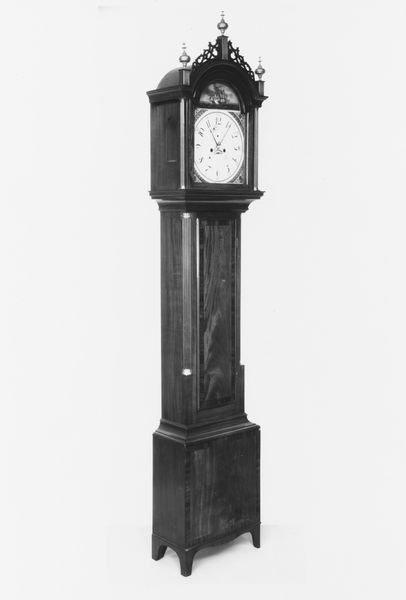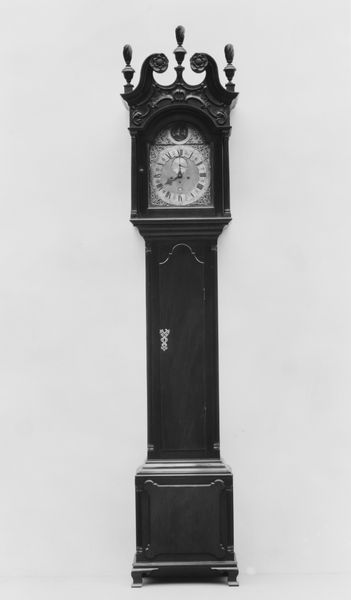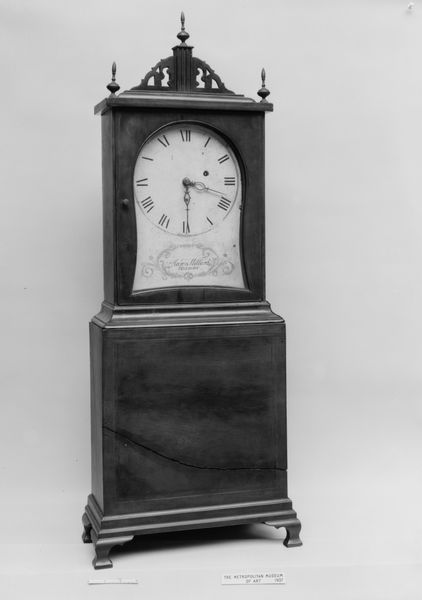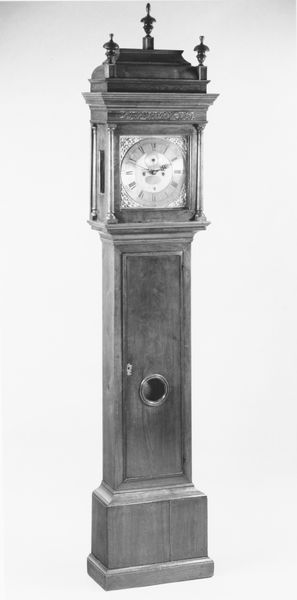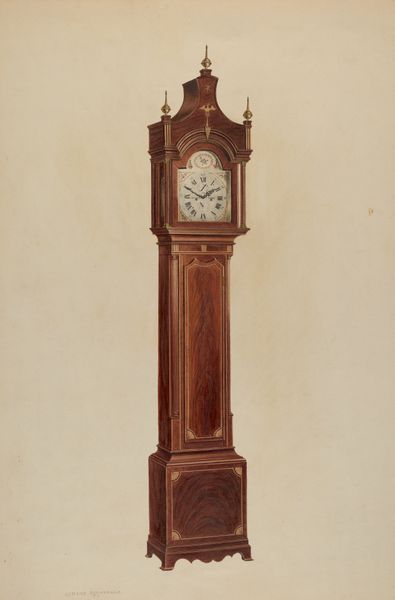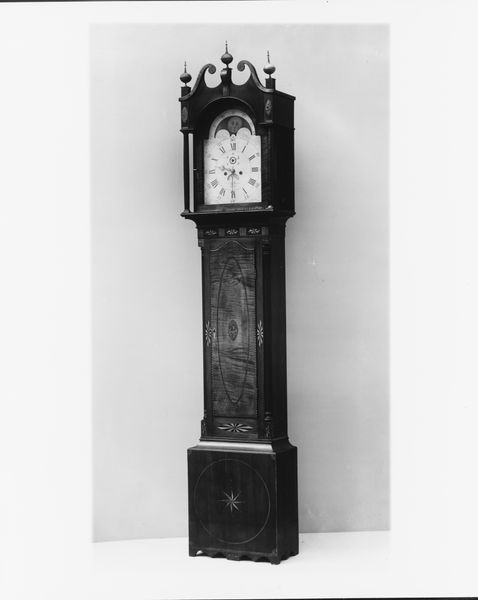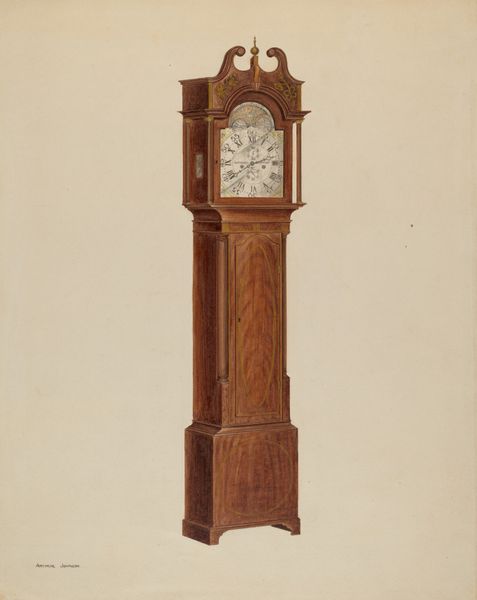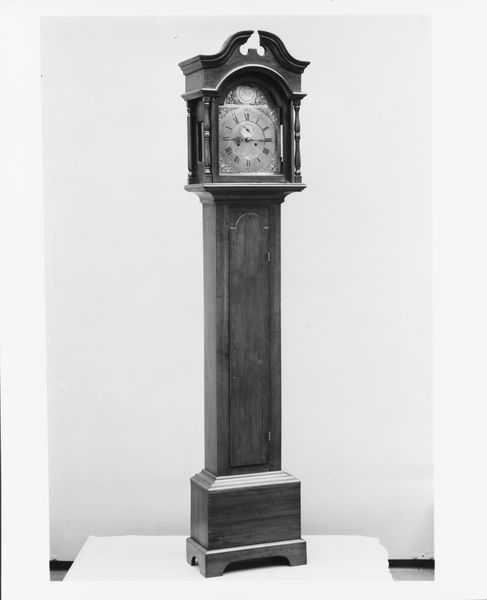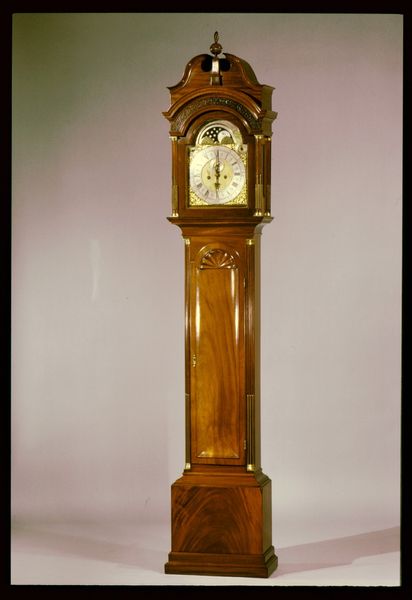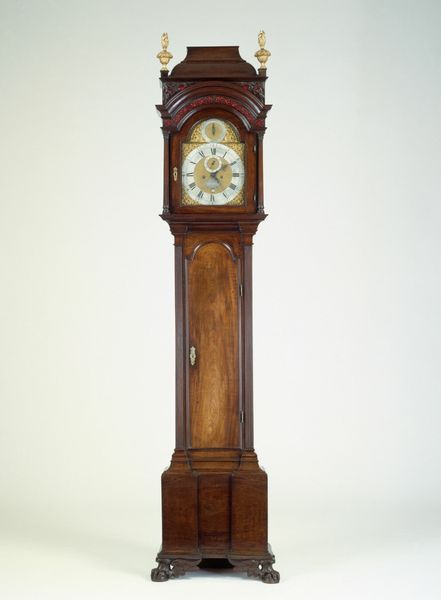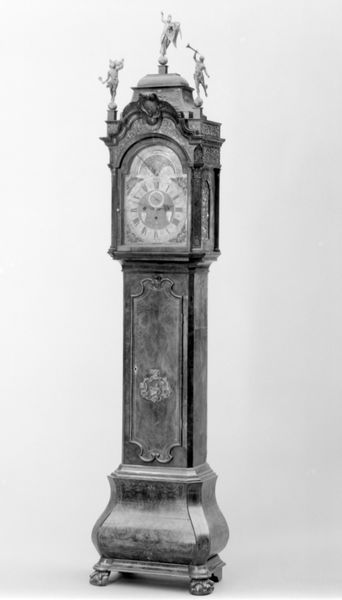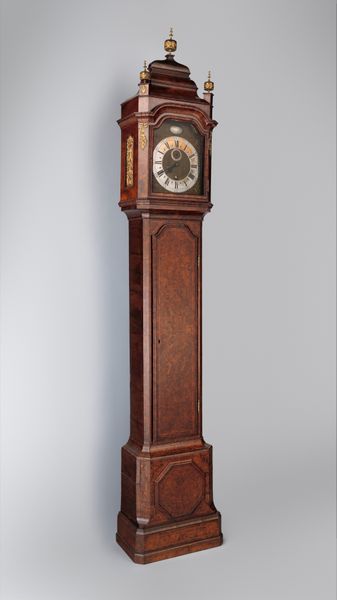
carving, sculpture, wood
#
carving
#
sculpture
#
geometric
#
classicism
#
sculpture
#
united-states
#
wood
#
decorative-art
Dimensions: 91 1/4 x 20 5/8 in. (231.8 x 52.4 cm)
Copyright: Public Domain
Editor: Here we have a tall clock crafted by James Dinsmore between 1803 and 1809. It’s currently housed at the Metropolitan Museum of Art. It’s crafted with wood, and what strikes me first is the interplay of geometric shapes across its whole structure, contrasting rectangular blocks with the rounded clock face and decorative arches at the top. How would you interpret this piece through a Formalist lens? Curator: Certainly. Let's focus on the compositional elements. Notice the emphasis on verticality, balanced by the horizontal divisions. The craftsman's choice of wood impacts how we view the clock, would a metal frame accomplish the same feeling of warmth and connection? Moreover, the engraved monogram appears almost incidental given the otherwise stringent, organized design of the object, almost disrupting its compositional wholeness. How do you understand its contribution to the piece as a whole? Editor: I see what you mean about the warmth – it’s not sterile at all despite the clear lines. The engraving feels personal and somewhat softens the overall rigidity. It creates a fascinating contradiction. Does that contribute to how successful the artwork is, according to formalist ideas? Curator: A Formalist would consider its contribution as either strengthening or weakening the visual and conceptual impact. Semiotically, we could deconstruct its intended meaning by understanding how it engages with the work. Now, do the geometric motifs across this clock speak to something greater in this clock’s value to design theory? Editor: I see how breaking it down into its components gives you such a unique insight. The clock has a lot more to unpack than I had initially realized by only considering its surface impression!
Comments
No comments
Be the first to comment and join the conversation on the ultimate creative platform.
